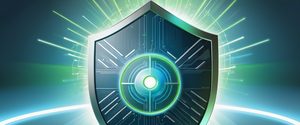
The landscape of cybersecurity has fundamentally shifted over the past decade, transforming antivirus software from a luxury reserved for premium subscriptions into an essential component of digital safety available without monetary cost. When considering what constitutes a good free antivirus program in 2025, the answer extends far beyond simply identifying software that costs nothing. A quality free antivirus solution must balance robust threat detection capabilities with minimal system performance impact, provide real-time protection against evolving cyber threats, operate across multiple platforms, maintain an intuitive user interface that doesn’t overwhelm non-technical users, and deliver genuine security value that justifies its absence of financial burden. The emergence of highly capable free antivirus options has democratized digital protection, allowing individuals and small organizations with limited budgets to achieve meaningful defense against viruses, malware, ransomware, spyware, and other malicious threats that have proliferated exponentially since the pandemic accelerated digital transformation across society. This comprehensive analysis examines the characteristics of effective free antivirus programs, evaluates leading solutions in the current market, and provides practical guidance for selecting tools that genuinely protect without compromising system performance or privacy.
Understanding the Nature of Free Antivirus Software and Its Role in Digital Protection
Free antivirus software exists within a fundamentally different paradigm than its paid counterparts, governed by business models that must sustain development and innovation through alternative revenue streams rather than direct subscription fees. Understanding this distinction proves essential for evaluating what a good free antivirus program can realistically deliver. The most common business models supporting free antivirus development involve converting users to paid premium versions through feature limitations in the free tier, incorporating advertising within the user interface, collecting and leveraging user data for analytics or research purposes, or simply accepting the free offering as a loss leader designed to build market share and brand loyalty. Despite these alternative revenue models, modern free antivirus programs have evolved substantially from their earlier incarnations, leveraging cloud-based infrastructure, machine learning algorithms, and crowdsourced threat intelligence to achieve detection rates that rival significantly more expensive commercial solutions. The foundation of effective free antivirus protection rests upon several core capabilities that distinguish legitimate security solutions from less effective alternatives. A good free antivirus program must maintain current malware databases that receive regular updates, typically multiple times daily, ensuring protection against threats identified since the software’s installation. Real-time protection capability represents another critical distinguishing feature, continuously monitoring files, applications, and downloads as they occur rather than only scanning when manually initiated by the user. Beyond these essentials, quality free antivirus solutions increasingly incorporate advanced threat detection methodologies including behavioral analysis that observes suspicious activities patterns, heuristic scanning that identifies previously unknown threats through code analysis, and machine learning systems that evaluate characteristics of potentially malicious files to predict maliciousness with surprising accuracy.
The relationship between free and paid antivirus software deserves particular attention when assessing what constitutes adequate protection at no cost. Research indicates that some of the best-tested free antivirus programs actually outperform commercial solutions in independent laboratory evaluations, achieving 100% detection rates against both known and zero-day malware samples. This counterintuitive finding suggests that free and paid solutions increasingly compete on the same technological playing field, with differences emerging more distinctly in supplementary features rather than core malware protection. The primary distinction between free and paid antivirus solutions typically manifests in additional security layers such as identity theft protection, VPN services, password managers, parental controls, firewall functionality, webcam protection, and advanced ransomware shielding that free versions reserve for premium subscribers. Consequently, determining whether a free antivirus program provides good protection depends substantially upon matching specific security needs against the capabilities offered at no financial cost, recognizing that many users may achieve adequate protection through free solutions without requiring premium features.
Key Features and Capabilities Defining Quality Free Antivirus Programs
The assessment of what makes a good free antivirus program requires evaluating multiple technical and practical dimensions that extend beyond simplistic marketing claims or user ratings. Malware detection capability represents the foundation upon which all antivirus evaluation must rest, with quality solutions demonstrating consistent ability to identify and quarantine malicious code before it compromises system integrity. Independent testing organizations including AV-TEST, AV-Comparatives, and SE Labs provide objective performance metrics revealing that leading free antivirus options detect between 88% to 100% of malware samples during scanning operations and maintain similar effectiveness through real-time protection mechanisms. The methodology through which antivirus software detects threats has evolved significantly beyond simple signature matching that compares files against databases of known malware fingerprints. Contemporary free antivirus programs employ behavioral-based detection that monitors how applications behave during execution, identifying suspicious activities such as attempts to encrypt files, modify system settings, or establish unauthorized network connections that characterize ransomware and other advanced threats. Heuristic analysis further extends detection capabilities by examining code structure and operational patterns to identify previously unknown threats that may not yet appear in any malware database, a capability particularly valuable given that sophisticated attackers constantly develop novel malware variants designed to evade traditional signature-based detection. Machine learning integration represents the latest advancement in free antivirus technology, with algorithms trained on millions of known malware and legitimate files enabling systems to predict maliciousness with remarkable accuracy even when encountering completely novel code for the first time.
System performance impact represents another critical dimension distinguishing good free antivirus programs from less effective alternatives, since security software consuming excessive system resources ultimately diminishes user productivity and encourages circumvention or uninstallation. Testing reveals that quality free antivirus solutions including Bitdefender, Avast, and AVG have minimized their computational footprint through optimization techniques that reduce CPU utilization, memory consumption, and disk I/O demands while maintaining comprehensive protection. Bitdefender’s approach exemplifies this optimization through cloud-based scanning that offloads intensive analysis to remote servers rather than consuming local processor cycles, a technique that enables fast scanning without noticeable system slowdown. Performance-conscious implementation extends to scanning methodology, with good free antivirus programs offering quick scan options that examine only the most vulnerable system locations rather than exhaustively analyzing every file, providing users flexible options that balance thoroughness against convenience. The usability dimension of antivirus software often receives insufficient attention despite its significant impact on real-world security outcomes. An overly complex interface encourages users to ignore alerts, disable protection temporarily and forget to re-enable it, or neglect performing recommended scans. Conversely, intuitively designed free antivirus programs with clear visual hierarchies, straightforward terminology, and logical menu structures facilitate proper usage even for non-technical users. Many quality free solutions including TotalAV and Bitdefender have redesigned their interfaces to emphasize essential functions prominently while relegating advanced options to easily accessible but unobtrusive settings menus.
The capability to protect across multiple operating systems and devices has become increasingly important as users maintain smartphones, tablets, personal computers, and work devices simultaneously. Good free antivirus programs now typically offer versions for Windows, macOS, Android, and iOS, enabling consistent protection across personal technology ecosystems without requiring separate subscriptions for each platform. This multi-platform approach proves particularly valuable for families seeking to protect children’s devices, workers protecting home computers used for business purposes, or individuals wanting comprehensive security without accumulating multiple vendor relationships and passwords. Real-time protection combined with scheduled scanning options distinguishes quality free antivirus from minimal implementations offering only on-demand scanning capability. Real-time protection monitors system activities continuously, intercepting threats the moment they attempt execution, whereas scheduled scanning permits users to perform comprehensive analysis during periods of expected inactivity such as overnight hours when system performance impact matters less. The combination of these approaches provides layered protection catching threats through multiple mechanisms, with real-time protection blocking most threats immediately while scheduled scans identify any compromise that somehow bypassed continuous monitoring. Additional protective features increasingly standard in quality free antivirus programs include web protection that warns users before clicking links to malicious websites, email scanning that inspects attachments and message content for threats, firewall components that monitor and restrict network traffic, ransomware-specific protection that monitors file encryption attempts characteristic of ransomware attacks, and banking protection that provides secure environments for sensitive financial transactions.
Evaluation of Leading Free Antivirus Solutions in 2025
The free antivirus marketplace in 2025 comprises several exceptionally capable solutions that have earned prominent recognition through independent testing and user satisfaction metrics. Bitdefender Antivirus Free has emerged as the consensus leader among multiple independent reviewers, consistently achieving perfect or near-perfect scores across independent laboratory testing while maintaining negligible system performance impact. During comprehensive in-house testing, Bitdefender Free detected 88% of malware samples through scanning operations and 74% through real-time protection mechanisms, results that pale in comparison to independent AV-TEST laboratory findings indicating 100% detection of both widespread and zero-day malware. The software’s strengths extend to user experience through its streamlined interface emphasizing essential scanning functionality without overwhelming users with technical options. Bitdefender Free includes web attack prevention that blocks malicious websites before downloads can initiate, advanced threat defense using behavioral detection to identify suspicious application activities, and online threat prevention that filters dangerous downloads. A particularly valuable feature for budget-conscious users involves seven days of complimentary VPN access without requiring credit card registration, providing temporary anonymity and encryption protection without financial commitment. The principal limitation of Bitdefender Free involves the absence of system optimization tools, lacking file cleanup, disk space management, or registry optimization functions that some competitors include. Pricing for premium versions starting at $9.99 annually demonstrates accessibility for users seeking expanded functionality.
Avast Antivirus Free represents another strong option particularly valued for its comprehensive feature set within the free tier and straightforward deployment without email requirements. Testing demonstrates that Avast Free detected 65.33% of malware samples during scanning operations and 63.33% through real-time protection, results that independent AV-TEST laboratory analysis contradicted by awarding perfect detection scores, suggesting real-world performance exceeds in-house testing results. What distinguishes Avast within the free antivirus marketplace involves inclusion of basic ransomware protection and firewall functionality directly in the free version rather than restricting these to premium subscribers. The software features a practical sandbox mode allowing users to execute suspicious files within isolated environments where malicious code cannot affect the main system, an advanced capability rarely included in free software. Real-time protection monitors incoming threats continuously, email guardian scans messages and attachments, and web shield filters dangerous websites. Notably, Avast includes a practical network inspector enabling users to scan the network they currently access to identify security vulnerabilities, a useful feature for users concerned about home network safety. The free version’s primary limitations involve excessive pop-up advertising and relegation of advanced features including phishing protection and sandbox mode to premium tiers. Some users also report that Avast’s scanning operations noticeably impact system performance, though this represents less pronounced than historical versions. Premium subscriptions commence at $31.20 annually, representing reasonable pricing for the expanded capabilities offered.
AVG Antivirus Free maintains strong market position through real-time protection, comprehensive scanning capabilities, and multi-platform support. The software’s appeal particularly resonates with users seeking straightforward functionality without excessive complexity or aggressive upselling toward premium tiers. AVG provides essential real-time scanning, email protection evaluating attachments for threats, and network analysis inspecting connected devices for potential security issues. The software successfully achieved perfect six out of six ratings for protection and usability in independent AV-Comparatives testing. Free users benefit from core antivirus functionality without requirement for account registration, a practical consideration for privacy-conscious individuals uncomfortable providing personal information. Limitations of the free version include absence of webcam protection, firewall functionality, and advanced features reserved for premium subscribers. Some users report that AVG’s scanning operations produce moderate system performance impact particularly on older or lower-specification machines, though modern implementations have substantially improved efficiency. AVG Internet Security paid plans commence at $39.99, providing additional functionality for users requiring more comprehensive protection.
Protect Your Digital Life with Activate Security
Get 14 powerful security tools in one comprehensive suite. VPN, antivirus, password manager, dark web monitoring, and more.
Get Protected NowTotalAV Antivirus provides particularly strong appeal for users prioritizing ease of use and comprehensive additional features beyond core antivirus functionality. The software emphasizes beginner-friendliness through intuitive design, straightforward menus, and helpful guidance throughout the installation and configuration process. TotalAV includes system tune-up tools that clean junk files, optimize startup programs, and improve overall system performance, valuable functionality frequently sought by users of lower-specification computers. Data breach scanning notifies users whether their email address has appeared in publicly disclosed database breaches, enabling proactive password changes and fraud monitoring. The software provides excellent malware detection capabilities through full system, quick, and custom scanning options enabling users to choose scanning intensity matching their circumstances. WebShield provides real-time website filtering, blocking access to malicious sites before users can download infections. A significant limitation of TotalAV’s free version involves the absence of real-time protection, restricting scanning to manually initiated operations or scheduled scans. Consequently, users relying solely on TotalAV’s free version should diligently perform regular scans rather than depending upon continuous background protection. Pricing for premium versions provides substantial value at $19.00 annually for the first year, with a 30-day money-back guarantee reducing purchase risk. The software’s integration with one of the marketplace’s best-regarded VPN services adds considerable value.
Microsoft Defender Antivirus, formerly known as Windows Defender, deserves particular attention as the pre-installed security solution available on all modern Windows systems at no additional cost. Microsoft has substantially improved Defender’s threat detection capabilities in recent years through continuous refinement and integration with cloud-based threat intelligence. The software seamlessly integrates with Windows systems through deep operating system integration providing privileged access to system layers enabling more effective threat detection and prevention. Users derive significant convenience from having antivirus protection already functional without requiring separate installation, configuration, or management. However, independent testing reveals that Microsoft Defender’s detection rates trail leading dedicated antivirus solutions by meaningful margins, though remaining sufficient for basic protection against common threats. The software’s limitations become apparent when comparing its feature set to dedicated antivirus programs, lacking supplementary functionality such as password managers, VPN services, or device optimization tools. Consequently, while Microsoft Defender provides worthwhile baseline protection for users accepting basic functionality, individuals seeking more robust protection may benefit from supplementing or replacing it with dedicated antivirus solutions.
Kaspersky offers a compelling free antivirus option providing robust protection through a 30-day trial of Kaspersky Standard, thereafter reverting to limited free functionality or requiring premium subscription. The software emphasizes comprehensive features including antivirus, anti-malware, anti-ransomware protection, safe web browsing, existing virus removal capabilities, anti-phishing functionality, two-way firewall, performance optimization, device space cleanup, app management, and do-not-disturb gaming mode. Kaspersky’s reputation for excellence in threat detection through independent testing provides confidence in protection quality. The primary limitation involves the trial nature of the free offering, with full feature access restricted to the initial 30-day period after which users must either pay for premium features or accept reduced functionality. For users willing to commit to a paid subscription, Kaspersky Standard pricing commences at competitive levels, with plans progressively adding features through Plus and Premium tiers. Kaspersky’s strong emphasis on privacy protection and data security distinguishes the brand among competitors.
Comodo Antivirus utilizes distinctive Defense+ technology and sandboxing approaches that quarantine unknown files for isolated analysis, preventing execution of potentially harmful code within the main system. The software’s prevention-based philosophy treats unknown files as potentially harmful rather than assuming innocence until proven guilty, a proactive stance potentially reducing exploitation window for novel malware. Features include cloud-based scanning leveraging remote servers for analysis rather than consuming local resources, game mode disabling unnecessary protections during gaming sessions to maximize performance, scheduled scanning capabilities, and comprehensive spyware scanning. Complete Comodo Antivirus pricing remains exceptionally competitive at $29.99 annually despite including advanced features such as firewall, sandbox, and secure shopping protection. The free version provides basic protection but lacks advanced features reserved for paid plans.
Surfshark Antivirus combines antivirus protection with one of the marketplace’s most respected VPN services through the Surfshark One bundle, providing compelling value for users prioritizing privacy alongside security. The antivirus component includes real-time threat protection through continuous malware monitoring, scheduled scanning capabilities, and behavior-based threat detection. Surfshark’s cloud-based infrastructure ensures minimal local system resource consumption while maintaining effective protection. The bundled VPN provides unlimited bandwidth and access to thousands of global servers, capabilities substantially exceeding free VPN offerings from competitors. A 30-day money-back guarantee enables users to trial the service risk-free before committing financially. The software’s emphasis on privacy through transparent no-logs policies and advanced anonymization features appeals particularly to users uncomfortable with data collection practices of some competitors.

Comparative Analysis of Free Versus Paid Antivirus Software
The relationship between free and paid antivirus solutions has fundamentally transformed, with contemporary free programs offering protection quality approaching or matching premium alternatives in core threat detection functionality. Early-generation free antivirus software justified premium pricing through meaningfully superior detection rates and more sophisticated threat analysis techniques, but technological democratization has narrowed this performance gap substantially. However, meaningful distinctions persist in supplementary features, support services, and advanced protection capabilities that distinguish paid solutions. Organizations and individuals must carefully evaluate which features they genuinely require rather than assuming paid solutions universally provide proportionally greater value. The primary advantages of paid antivirus software include comprehensive multi-device licensing enabling single subscriptions to protect numerous computers, smartphones, and tablets simultaneously without separate installations or account management. Advanced identity theft protection including credit monitoring, financial fraud detection, and identity restoration services represent supplementary features typically reserved for premium tiers, particularly valuable for users with substantial financial assets or extensive online presence. VPN integration providing encrypted browsing connections across public networks offers privacy benefits that free solutions rarely include, though some paid antivirus programs limit VPN bandwidth or simultaneous connections. Firewall functionality providing granular network traffic control, protection against unauthorized network access, and intrusion prevention capabilities extend beyond what most free solutions offer. Password manager features securely store and auto-fill login credentials across websites and applications, reducing the burden of password memorization while enabling stronger unique passwords for each service. Parental control functionality allows parents to monitor children’s online activities, restrict access to inappropriate websites, and establish device usage schedules, particularly relevant for families seeking comprehensive protection.
Professional customer support represents another significant distinction between free and paid antivirus offerings. Users of free antivirus programs typically lack access to telephone support, live chat assistance, or email help desk services, instead relying upon online documentation, community forums, or independent troubleshooting. Paid antivirus subscribers often receive 24/7 support from trained technicians capable of providing personalized assistance with infection remediation, configuration optimization, or technical issues. This distinction proves particularly meaningful when infections occur despite antivirus protection, as affected users can receive expert guidance navigating recovery procedures rather than navigating recovery independently. Importantly, research regarding detection rates reveals minimal meaningful differences between quality free and paid antivirus solutions when comparing them under controlled testing conditions. Independent laboratory tests by AV-TEST and AV-Comparatives consistently demonstrate that leading free antivirus programs achieve detection rates matching or approaching paid competitors, with some free solutions actually outperforming moderately-priced paid alternatives. This convergence suggests that payment does not primarily purchase superior core protection but rather supplementary features, professional support, and convenience benefits rather than inherently better malware detection.
The cost-benefit analysis of paid versus free antivirus becomes clear when evaluating specific user requirements. Users of older computers with limited processing power may benefit from free solutions occupying minimal system resources, whereas users prioritizing cross-device protection across numerous family members’ devices might justify paid subscription costs through superior multi-device licensing. Individuals managing sensitive financial accounts or maintaining valuable personal information might value the identity theft monitoring and specialized banking protections characteristic of premium solutions. Conversely, cautious users practicing safe browsing habits and careful email practices may achieve adequate protection through free antivirus combined with defensive computing practices. The reality that many sophisticated cyber-criminal organizations focus on high-value targets and enterprise environments means casual personal users may not justify premium pricing for protection against threats unlikely to target their specific circumstances.
Platform-Specific Considerations for Free Antivirus Protection
The proliferation of personal computing platforms including Windows, macOS, Android, iOS, and Linux has created corresponding diversity in free antivirus availability and protection requirements across these platforms. Windows systems represent the most straightforward case given Microsoft’s integrated Microsoft Defender Antivirus pre-installed on all modern systems, though supplementation with dedicated antivirus solutions remains worthwhile for users prioritizing maximum protection. The Windows platform’s market dominance as the primary target for malware authors necessitates particular vigilance, making robust antivirus protection paramount on Windows systems more than many alternatives. Most leading free antivirus programs including Bitdefender, Avast, AVG, TotalAV, and numerous others provide Windows versions. macOS systems have historically experienced lower malware attack rates than Windows due to smaller market share and technical architecture differences, yet Mac malware has proliferated substantially in recent years as attackers recognize the platform’s valuable users and increasing adoption rates. While Apple’s built-in Xprotect and system integrity protection provide baseline safeguarding, independent testing reveals these built-in defenses trail dedicated antivirus programs in detection rates and advanced threat protection. Quality free antivirus options for Mac systems include Bitdefender, Avast, AVG, and TotalAV, though fewer Mac-specific solutions exist compared to Windows alternatives. Intego represents a Mac-specialized solution providing protection specifically optimized for macOS rather than adapted from Windows versions, delivering strong protection with features including external drive scanning and iOS device integration enabling comprehensive ecosystem protection. Android smartphones and tablets face escalating malware threats including malicious apps, banking trojans, and ransomware variants, though Google Play Protect provides baseline scanning of applications. Independent free antivirus options for Android include Bitdefender Mobile Security, Avast Mobile Security, AVG AntiVirus for Android, and TotalAV, each providing real-time protection, malware scanning, and app evaluation capabilities. iOS systems benefit from Apple’s restrictive app store policies and sandboxed architecture providing greater inherent security than Android, though sophisticated targeted attacks can compromise iOS devices. Limited standalone iOS antivirus options exist since Apple restricts security app functionality, though services like TotalAV and Avira offer iOS protection through specialized features like breach notification and web filtering. Linux systems face substantially lower malware prevalence than Windows or macOS, with Comodo offering free antivirus protection specifically for Linux environments alongside Windows and Mac support.
Performance Impact and System Resource Considerations
The relationship between antivirus protection and system performance represents a critical dimension determining real-world usability and user satisfaction with free antivirus solutions. Security software executing continuously in the background consumes CPU processing cycles, memory resources, and disk input/output operations that reduce availability for user applications and general system responsiveness. Excessive antivirus resource consumption can render computers noticeably sluggish, cause application slowdowns or crashes, and frustrate users sufficiently to disable protections temporarily and forget to re-enable them, creating dangerous security gaps. Historical antivirus implementations often sacrificed optimization for comprehensive protection, resulting in notorious system slowdown that became synonymous with antivirus usage. Modern free antivirus programs have invested heavily in performance optimization through cloud-based scanning that offloads processing burden to remote servers rather than local machines, selective scanning targeting most vulnerable system locations rather than exhaustive analysis, and efficient algorithms that analyze files rapidly without consuming excessive resources.
Testing by independent analysts including Tom’s Guide and All About Cookies consistently demonstrates that McAfee, Norton, and Bitdefender rank among the lightest-weight antivirus solutions with minimal perceptible performance impact during background protection. Bitdefender’s cloud-based scanning approach enables the software to complete full system scans without measurable slowdown, with average CPU utilization around 30% during active scanning and less than 1% during background monitoring. AVG and Avast demonstrate similarly light footprints, though scanning operations produce somewhat greater CPU utilization than Bitdefender particularly on older hardware. TotalAV’s system tune-up functionality actually improves system responsiveness through cleanup of unnecessary files and startup programs, though the free version lacks real-time protection that provides continuous background monitoring. Kaspersky Security Cloud Free historically demonstrated among the lightest impacts with testing revealing negative impact percentages (improvements) in background mode, though current implementations may differ. Users of older or budget-specification computers should prioritize lightweight antivirus solutions over feature-rich alternatives, recognizing that comprehensive scanning consuming excessive resources ultimately diminishes rather than enhances security when users disable protection due to frustration.

Evaluating and Selecting Appropriate Free Antivirus Solutions for Individual Requirements
Determining which free antivirus program best suits specific user requirements demands evaluating multiple dimensions beyond simple feature checklists or popularity rankings. Users should begin by assessing their particular threat environment and security requirements based on factors including usage patterns, online activities, and sensitivity of data handled. Individuals accessing banking and financial services, managing sensitive business information, or maintaining valuable personal data warrant more comprehensive protection than casual users browsing entertainment websites and checking email. Technical proficiency represents another key consideration, as some free antivirus programs like Bitdefender and Avast offer sophisticated configuration options appealing to advanced users while others like TotalAV prioritize simplicity for less technically inclined individuals. Cross-platform protection requirements should be evaluated when users maintain multiple devices including personal computers, work laptops, smartphones, and tablets, with some free solutions offering better multi-platform consistency than alternatives. Performance requirements become particularly relevant for users of older computers, budget-specification machines, or devices with limited processing power where lightweight solutions like Bitdefender take precedence over feature-rich alternatives consuming substantial resources. System preference between Windows, macOS, Linux, or combinations thereof influences available options, given that some solutions provide complete cross-platform coverage while others emphasize specific operating systems. Privacy considerations guide selection toward solutions with transparent data policies and minimal ad-serving behavior, recognizing that some free antivirus programs monetize user data in ways some individuals find objectionable.
Prospective users should examine independent laboratory testing results from reputable sources including AV-TEST, AV-Comparatives, and SE Labs providing objective performance metrics rather than relying solely upon vendor marketing claims or user reviews potentially influenced by various biases. These independent tests quantify detection rates against standardized malware collections, measure system performance impact through standardized benchmark procedures, and evaluate usability through structured testing protocols. Consulting multiple review sources including Security.org, Cybernews, TechRadar, Tom’s Guide, and SafeWise provides diverse perspectives evaluating software from different evaluation methodologies and prioritization criteria. Trial periods offered by many solutions enable prospective users to evaluate real-world performance before committing to continued usage, with particular attention to system responsiveness during scanning operations and real-time protection effectiveness. Community feedback through trusted sources including user reviews on reputable sites and experiences shared through technology forums can provide valuable practical insights regarding user satisfaction, support quality, and real-world performance. However, users should recognize that highly negative reviews may come from individuals whose systems became infected despite using the antivirus, potentially due to user error rather than software failure, and that positive reviews may reflect limited user experience or favorable bias toward featured or sponsored solutions.
Limitations and Risks Associated with Free Antivirus Reliance
While quality free antivirus programs provide meaningful protection against common threats, users should maintain realistic expectations regarding protection limitations and appreciate risks inherent in any antivirus solution. No antivirus program achieves absolute protection against all possible threats, given the continuous evolution of malware techniques, the introduction of novel zero-day vulnerabilities exploiting previously unknown security flaws, and the sophisticated resources deployed by motivated attackers capable of developing evasion techniques. Free antivirus solutions particularly face limitations in detecting sophisticated targeted attacks directed at high-value targets, given that advanced threat actors focus resources on systems protecting valuable information rather than casual personal users. Users practicing risky online behaviors including clicking suspicious email links, downloading files from untrustworthy sources, or visiting malware-laden websites may exceed the protective capabilities of any antivirus solution, making defensive computing practices equally important as software-based protection. Some free antivirus programs track or monetize user data in ways that create privacy concerns, with certain programs selling anonymized usage data to advertising networks or other organizations, representing an alternative cost beyond financial subscription when users exchange privacy for free software. Limited or non-existent customer support characteristic of free antivirus means users experiencing infections must navigate recovery independently rather than accessing expert guidance, presenting challenges for non-technical individuals.
The concentration of antivirus resources by free programs on core malware detection sometimes results in reduced emphasis on emerging threat categories including ransomware protection, banking-specific security, or advanced phishing defense that paid solutions emphasize more heavily. While leading free solutions like Avast include basic ransomware protection in their free tiers, others reserve comprehensive anti-ransomware functionality for premium subscribers. Similarly, financial institutions recommend paid antivirus solutions with enhanced banking security protections over free alternatives, though users managing smaller account balances may reasonably determine free protection sufficiently addresses their threat profile. Features including VPN services, password managers, identity theft monitoring, and parental controls almost universally appear in paid antivirus products rather than free offerings, meaning users requiring these supplementary functionalities must either subscribe to premium solutions or utilize separate specialized tools.
Best Practices for Maximizing Free Antivirus Effectiveness
Maximizing the protective value of free antivirus software extends beyond simply installing and forgetting about the program, requiring engagement in ongoing practices supporting its effectiveness. Users should verify that automatic updates have been enabled, ensuring the antivirus consistently receives current malware definitions recognizing newly identified threats. Disabling automatic updates to prevent system restarts or software notifications creates dangerous gaps where new malware evades detection due to outdated definitions. Regular scanning operations should be scheduled at times when system usage is minimal, such as overnight hours, enabling comprehensive analysis without disrupting daily activities. Users of free antivirus programs lacking real-time protection must diligently perform manual scans either weekly or before downloading significant files. Web browsing practices heavily influence antivirus effectiveness, given that user-initiated actions like clicking malicious links or downloading unwanted files can overwhelm even the most capable security software. Avoiding suspicious email attachments, declining unexpected downloads, and verifying website legitimacy before entering sensitive information represent fundamental defensive practices supporting antivirus effectiveness. Email remains a primary attack vector through which malware spreads, making users skeptical of unexpected messages claiming urgent action requirements particularly those from purported financial institutions or system administrators. Maintaining current operating system security patches addresses known vulnerabilities that antivirus cannot remedy, given that no antivirus protects against vulnerabilities in the underlying operating system itself.
Creating periodic system backups enables rapid recovery when infections occur despite protective measures, as restoring from clean backup copies remains faster and more reliable than attempting to remediate compromised systems through antivirus cleanup procedures. Two-factor authentication for important accounts including email, financial institutions, and social media provides additional protection if login credentials become compromised through data breaches or phishing attacks. Recognizing the limitations of free antivirus regarding targeted attacks, users managing particularly sensitive information or operating in high-risk environments should evaluate whether paid solutions with additional protection layers justify the investment. Staying informed regarding current security threats through security blogs, news sources, and official alerts helps users recognize emerging attacks and adjust protective practices accordingly.
What Good Free Antivirus Means for You
The contemporary free antivirus marketplace offers genuinely capable security solutions that provide meaningful protection for most users without requiring financial investment or privacy sacrifice beyond what users typically accept when using free online services. Bitdefender Antivirus Free emerges as the most consistent choice across multiple independent evaluation frameworks and user satisfaction surveys, combining exceptional detection rates, negligible system performance impact, intuitive user interface, and multi-platform support. The software represents an excellent default choice for users uncertain which solution to select, providing reliable protection with minimal ongoing management overhead. Avast Antivirus Free similarly provides strong protection with more comprehensive features than some competitors despite slightly higher system resource consumption, particularly appealing to users valuing ransomware protection and firewall functionality in the free tier. TotalAV presents compelling appeal for users prioritizing ease of use and comprehensive additional features including system optimization, though the absence of real-time protection in the free version requires diligent manual scanning. Kaspersky represents an excellent option for security-conscious users willing to commit to paid subscription after the 30-day trial, combining respected laboratory performance with emphasis on privacy protection. Comodo offers particularly compelling pricing for paid versions while providing distinctive sandboxing approach appealing to users uncomfortable with conventional antivirus designs.
The selection among these quality free antivirus options should prioritize alignment with individual requirements rather than pursuing some imaginary “best” solution universally applicable to all circumstances. Users of older computers should prioritize lightweight solutions like Bitdefender over feature-rich alternatives potentially consuming excessive system resources. Users seeking maximum features within the free tier should consider Avast despite slightly higher resource consumption. Users particularly concerned about privacy should investigate Kaspersky’s data policies and commitment to privacy. Users valuing multi-platform consistency should verify specific operating system support before selection. Importantly, all recommendations presume users will maintain defensive computing practices including careful email behavior, cautious file downloads, and operating system updates alongside whatever antivirus solution they select. No antivirus program succeeds in isolation from responsible user behavior, meaning that even the highest-quality free solution fails to protect users who consistently engage in risky online activities. Conversely, quality free antivirus combined with careful practices provides genuine security adequate for the vast majority of personal users without requiring subscription fees or privacy sacrifice. The democratization of effective antivirus protection through quality free solutions represents genuine progress in cybersecurity, enabling individuals and organizations with limited budgets to achieve meaningful protection against evolving threats threatening digital safety and privacy worldwide.






